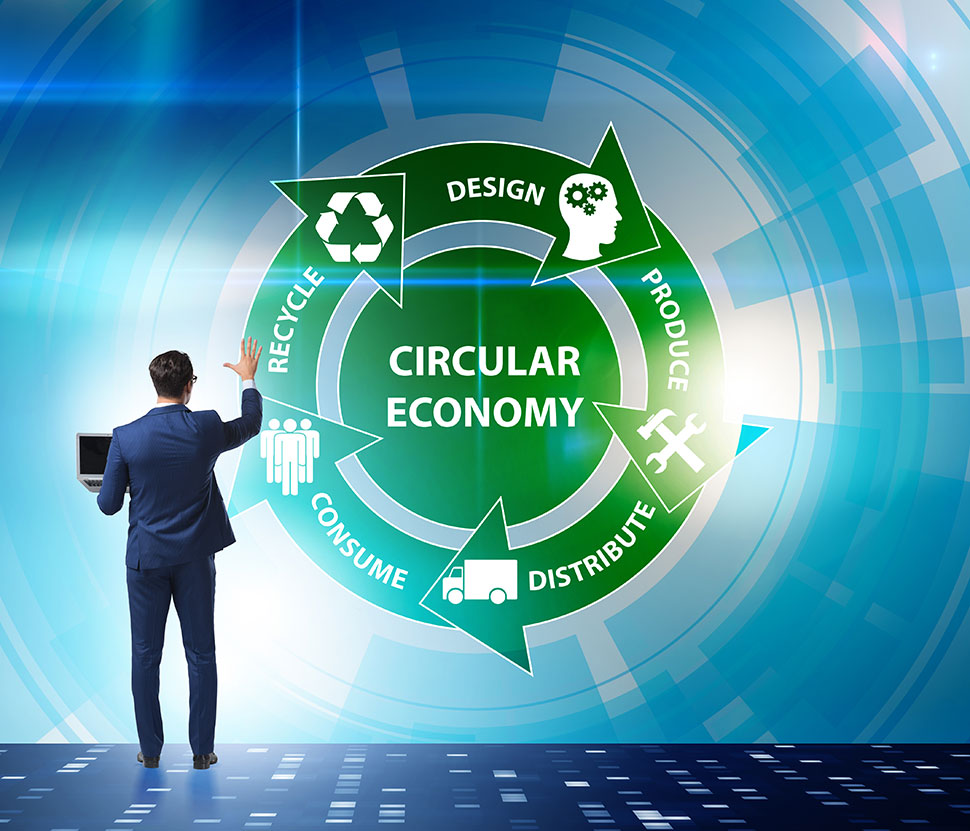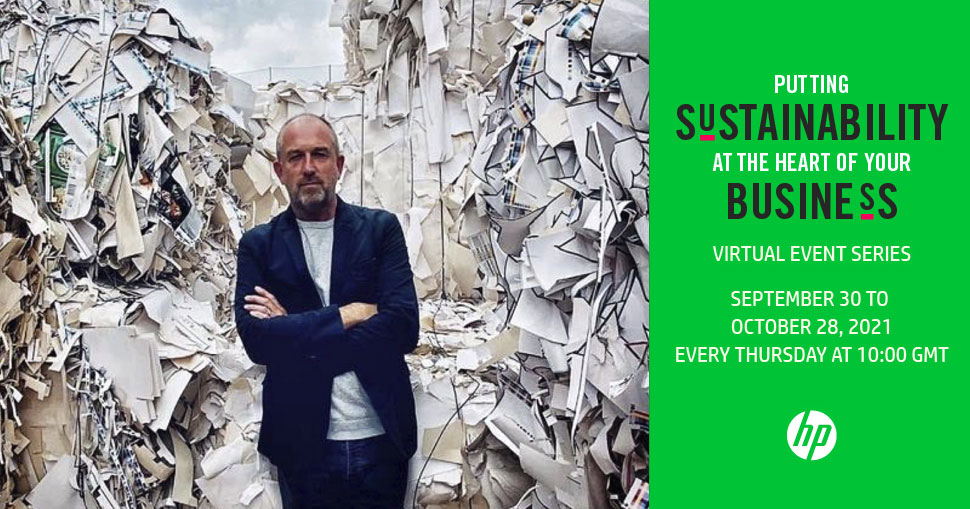With the undoubted rise in eco-consciousness, sustainability should now be at the heart of print service providers (PSPs)' business operations. The third of HP's series of Coffee Talks - taking place on 14th October 2021 - will focus on circular design and the 10 steps PSPs can take to move to more sustainable business operations.
In the interview that follows, Steve Lister - Global Retail Sustainability Strategist, Alternative Materials Innovator and Head of Sustainability at POPAI UK & Ireland - sets out his stall regarding the rise of circular design.
Firstly, what is circular design?
In simple terms, circular design is creating sustainable products with the end in mind.
Essentially, circular design means considering the product's entire lifecycle. So, looking at the birth of a product, from concept to materials, through to its development processes, how it's used and ultimately how it will end. Examining each aspect of the product's lifecycle can help its sustainability credentials soar.
What are the ten guiding principles of circular design?
There are 10 guiding principles to the concept of circular design. Here, I'll delve a little deeper into each, exploring the considerations at each stage of a product's life.
1. Material choices
Considering which materials to use is key in terms of their impact on the environment. For true sustainability, we need to be looking at those with the lowest-possible impact. And I don't just mean which materials you're using. How are you using them? Are you minimising waste? Ensuring your processes are as environmentally friendly as they can be? Reducing chemicals, glues and dyes? Have you any systems in place for recycling waste?
By taking a granular look at each aspect of your materials, you're helping to reduce negative impact on the planet.
2. Cyclability
How will your materials fare in the future? Can they be reused, returned to nature as nutrients, generate value over time? Think of it as a journey. A one-way ticket for your materials means that's where they end. But invest in a return, and you could see your materials start to take on a life of their own.
Programmes such as HP Planet Partners offer a simple and convenient way to recycle original HP inkjet supplies, computer hardware and rechargeable batteries.
This simple, yet extremely effective, system means that all returned products are recycled properly and processed to recover valuable plastics and metals for new products. Millions of tons of waste have been diverted from landfill.
3. Waste avoidance
What we're looking at here is keeping any waste during the creation process to an absolute minimum. Or, even better, eliminating it completely. A big factor here is prototypes. Is there a way around creating these using materials — or if not, can the materials be recycled or repurposed? Technology is a big ally here, with digital samples increasingly being used. For your actual products, look to how much material you actually need — can you order to demand, for example?
4. Disassembly
What components do your products comprise of? How easy are these to dissemble when the time comes? Could each specific component be recycled or reused? If a consumer couldn't dissemble the product, could they feasibly return it to you or a third party? Essentially, each element of your product needs careful consideration; not just about how it will work as intended, but where it will go when the product has reached the end of its life.
5. Green chemistry
Green chemistry relates to using chemical processes and products that reduce the use of hazardous substances -- or even eliminates them altogether. This could be through material or finishing choices, exploring the use of plant-based alternatives. Make sure each stage of your process is in line with green chemistry best practice and adheres to the Restricted Substances list.
There are nearly always more eco-conscious choices available if you look for them, such as HP Latex technology. HP Latex printers all run water-based inks, which are significantly kinder to the environment than solvent-based, eco-solvent, UV and UV gel inks. This immediately improves your environmental image and is something you can also pass on to your customers.
6. Refurbishment
Your responsibility towards a product doesn't end with a sale. For many items, wear and tear can reduce performance or functionality, but we can look at ways to rectify this, rather than simply throwing it away. Is there anything you could introduce to support refurbishment? Repair kits, replacement parts, troubleshooting guides? Or perhaps look to your materials to make them more robust. Essentially, anything which will prolong the life of your product.
7. Durability
In tandem with refurbishment is durability. Making your product as long lasting as possible. There's something of a balancing act to navigate here as you don't want to compromise on functionality and aesthetics. Nor do you want a great-looking product that falls apart at the first hurdle. Look to your materials and your processes and find the middle ground.
8. Versatility
Trends change. People change. But can your product change? Versatility in a sustainability sense means that your product won't become immediately obsolete in times of change. And can it be repurposed?
In a great example of repurposing products, HP recently launched the world's first laptop manufactured with high-quality recycled plastics-material saved from the ocean, courtesy of the company's $2m plastic washing line that opened in Haiti in 2020.
9. Circular packaging
Packaging is a great place to look for sustainability improvements. Really, you're looking for packaging that can be reused, recycled or is biodegradable. Some brands use their packaging as an educational tool or use packaging that can be transformed into something else.
Your first question should be: do I need packaging? If the answer is yes, then it's time to get creative about how you use it. Consumers are increasingly looking for green credentials from brands and retailers, and this is a great way to communicate your activities to them.
10. New models
Consider how you could offer new service and business models to extend your product's life cycle. Could you introduce take-back or reseller schemes?
An excellent example of this is HP's Recycled Satin Canvas, a printable canvas made from 100% recycled water bottles retrieved from the ocean during organised clean-ups.
HP Recycled Satin Canvas is eligible for return through the HP Large-Format Media take-back programme. It offers a more eco-conscious media solution for printers around the world and, for customers in the UK, approved HP reseller Perfect Colours has recently set up a new website dedicated to the product.
Summary
To summarise, I've touched on the ten principles of circular design, but I've really only scratched the surface. Each needs careful consideration in its own right. They also need to be seen as a synergised set of principles, working at their best when they're working together.
Upcoming series of events hosted by HP
Steve Lister will be speaking at the third HP Coffee Talk event titled ‘Trends towards a Circular Business Model' at 10am GMT on 14th October 2021. To register for the event, please click here.
The remaining schedule of dates and topics is as follows:
-
- Coffee Talk 3: 14th October 2021, 10am GMT - Trends towards a circular business model.
-
- Coffee Talk 4: 21st October 2021, 10am GMT - Safety and certification advantages.
-
- HP Sustainability Webinar: 28th October 2021, 10am GMT - Putting sustainability at the heart of your business.






